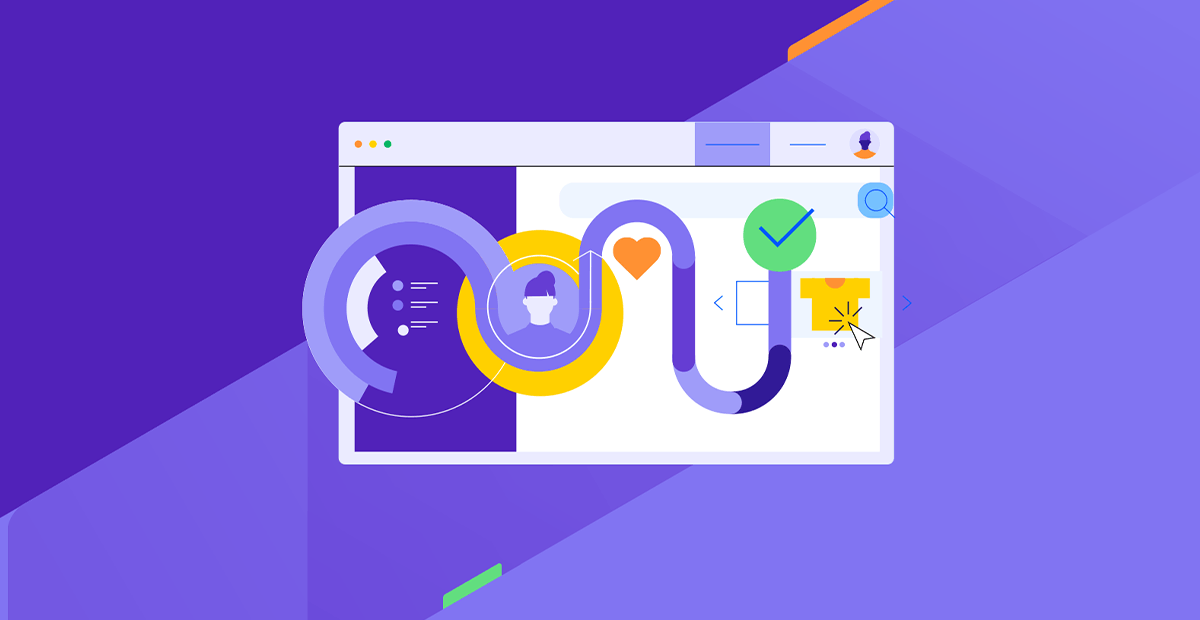The Content Personalization Playbook: A Step-by-Step Guide for Marketers

Implementing a successful personalization strategy can seem daunting, but this five-step playbook can help you get started.
We live in a world where personalization has moved from a nice-to-have to a necessity. Consumers are inundated with content from every direction, and they increasingly expect experiences tailored to their unique interests, behaviors and needs. In fact, studies show that 80% of consumers are more likely to make a purchase when brands offer personalized experiences.
Despite this overwhelming evidence supporting the benefits of personalization, many organizations find themselves stuck in neutral. They have the tools and the data but are unsure of how to effectively harness them to deliver the personalized experiences their audiences crave.
If this sounds familiar, don’t worry—you’re not alone. Implementing a successful personalization strategy can seem daunting, especially if you’re starting from scratch. But with the right approach and a clear roadmap, any content team can begin leveraging the power of personalization to drive engagement, conversion and loyalty.
In this guide, we’ll walk you through a step-by-step process for getting started with content personalization. Keep reading.
Step 1: Define Your Personalization Goals and KPIs
Before diving into tactics and technologies, it’s crucial to establish a clear vision for your personalization efforts. What exactly are you hoping to achieve through personalization? Increased engagement? Higher conversion rates? Improved customer loyalty?
Defining your goals up front will guide your entire personalization strategy, from the data you collect to the content you create to the metrics you track. Some common personalization goals include:
- Increasing time on site and pages per visit
- Boosting conversion rates for key actions (signups, purchases, etc.)
- Improving email open and click-through rates
- Raising customer lifetime value
- Enhancing brand affinity and advocacy
Once you’ve identified your high-level goals, translate them into specific, measurable KPIs. For example, if your goal is to increase engagement, your KPIs might include metrics like bounce rate, time on page and scroll depth. If you’re focused on conversion, you might track click-through rates, form completions and revenue per visitor.
Having these clear, quantifiable targets will help you measure the success of your personalization efforts and optimize your approach over time.
Step 2: Identify Your Audience Segments
Personalization is all about delivering the right content to the right person at the right time. But to do that effectively, you need a clear understanding of who your audience is and what they care about.
This is where audience segmentation comes in. Segmentation is the process of categorizing your audience into distinct groups based on common attributes, such as:
- Demographics (age, gender, location, income, etc.)
- Psychographics (interests, values, lifestyle, etc.)
- Behavioral data (past purchases, content interactions, device usage, etc.)
- Customer journey stage (awareness, consideration, purchase, retention, etc.)
By grouping your audience into these segments, you can start to develop a more nuanced picture of their needs, preferences and behaviors. This understanding will form the foundation of your personalization strategy.
To get started with segmentation, dive into your existing customer data. Identify recurring themes and similarities that can help you define distinct audience segments. If you’re lacking in first-party data, consider deploying surveys, interviews or focus groups to gather insights directly from your audience.
As you build out your segments, aim to create groups that are:
- Distinct: Each segment should be clearly differentiated based on meaningful characteristics.
- Actionable: Segments should be defined in a way that allows you to tailor your content and messaging to their specific needs.
- Substantial: Each segment should be large enough to justify the investment in personalized content.
- Stable: While segments can evolve over time, they should be relatively stable in the short term.
Step 3: Map Content to Customer Journeys
With your goals defined and your audience segments identified, it’s time to start thinking about your content. The key to effective personalization is delivering content that is relevant and valuable to each user, based on their unique attributes and where they are in their journey with your brand.
To do this, you’ll need to create a content map that aligns your content assets with specific stages of the customer journey for each of your audience segments. A simple content mapping framework might look like this:
| Journey Stage | Segment 1 Content | Segment 2 Content | Segment 3 Content |
|---|---|---|---|
| Awareness | Blog Post A | Video A | Infographic A |
| Consideration | eBook B | Case Study B | Webinar B |
| Decision | Demo C | Free Trial C | Consultation C |
| Retention | Newsletter D | Loyalty Program D | Community Event D |
For each cell in the matrix, you’re identifying the specific piece of content that is most relevant and valuable for that particular segment at that particular stage in their journey.
Of course, this is a simplified example—your actual content map will likely be much more complex, with multiple pieces of content for each segment and stage. The key is to make sure you have content that addresses the unique needs and interests of each segment at each touchpoint.
As you’re building out your content map, consider the following tips:
- Leverage your existing content: You likely already have a wealth of content assets that can be repurposed and personalized for different segments. Audit your existing content and look for opportunities to tailor it to specific audiences.
- Fill in the gaps: Identify any stages or segments where you’re lacking relevant content, and prioritize creating assets to fill those gaps.
- Consider the full journey: Personalization doesn’t stop after the sale. Consider how you can use personalized content to drive retention, upselling and advocacy.
- Use a variety of formats: People have varying preferences for how they consume information. Use a mix of formats (text, video, audio, interactive, etc.) to cater to different preferences.
Step 4: Leverage Technology for Scale and Automation
Manually personalizing content for each individual user simply isn’t feasible for most organizations. That’s where technology comes in. By leveraging the right tools and platforms, you can automate much of the personalization process, allowing you to deliver tailored experiences at scale.
Some key technologies to consider include:
- Customer Data Platforms (CDPs): CDPs aggregate customer data from multiple sources, creating unified profiles that can be used to inform personalization efforts.
- Content Management Systems (CMS): Many modern CMS platforms like Progress Sitefinity include personalization features, allowing you to create dynamic, rule-based content variations.
- Marketing Automation Platforms: These tools can automate the delivery of personalized content across channels, such as email, web and mobile.
- Recommendation Engines: Using machine learning algorithms, recommendation engines can automatically surface the most relevant content for each user based on their past behaviors.
When evaluating personalization technologies, look for solutions that:
- Integrate with your existing tech stack: Your personalization tools should work cleanly with your other marketing and analytics platforms.
- Offer robust segmentation capabilities: Look for tools that allow you to create and manage complex audience segments based on multiple data points.
- Provide real-time personalization: The best solutions can adapt content in real-time based on user behaviors and contextual factors.
- Deliver actionable insights: Your tools should provide clear reporting and analytics to help you understand the impact of your personalization efforts and optimize over time.
Step 5: Test, Measure and Optimize
Personalization is an iterative process. No matter how well you plan your strategy, there will always be room for improvement. That’s why it’s crucial to continually test, measure and optimize your approach.
Some key things to test and optimize include:
- Audience segments: Are your segments driving meaningful differences in engagement and conversion? If not, consider refining your segmentation criteria.
- Content variations: Use A/B testing to compare different versions of personalized content and identify the top performers for each segment.
- Delivery timing and channels: Experiment with delivering content at different times and through different channels to see what generates the best response.
- Personalization rules: Continuously tweak and refine the rules and algorithms that drive your personalization engine based on performance data.
As you’re testing and optimizing, keep a close eye on your KPIs. Regularly review your performance against your target goals, and use those insights to inform your ongoing optimization efforts.
It’s also important to remember that personalization is not a set-it-and-forget-it endeavor. As your audience evolves and new data becomes available, your personalization strategy will need to evolve as well. Make it a habit to regularly revisit your segments, content map and tactics to ensure they’re still aligned with your goals and your audience’s needs.
Concluding Thoughts
Personalization is no longer optional for content marketers. In an age of endless noise and shrinking attention spans, tailored, relevant experiences are the key to cutting through the clutter and building meaningful connections with your audience.
But while the imperative for personalization is clear, the path to get there can be less so. Many content teams find themselves overwhelmed by the complexities of segmentation, content mapping and technology selection.
The key is to start small and iterate. By following the step-by-step framework outlined in this guide—defining your goals, understanding your audience, mapping your content, leveraging technology and continuously optimizing—you can begin to infuse personalization into your content strategy in a manageable, impactful way.

